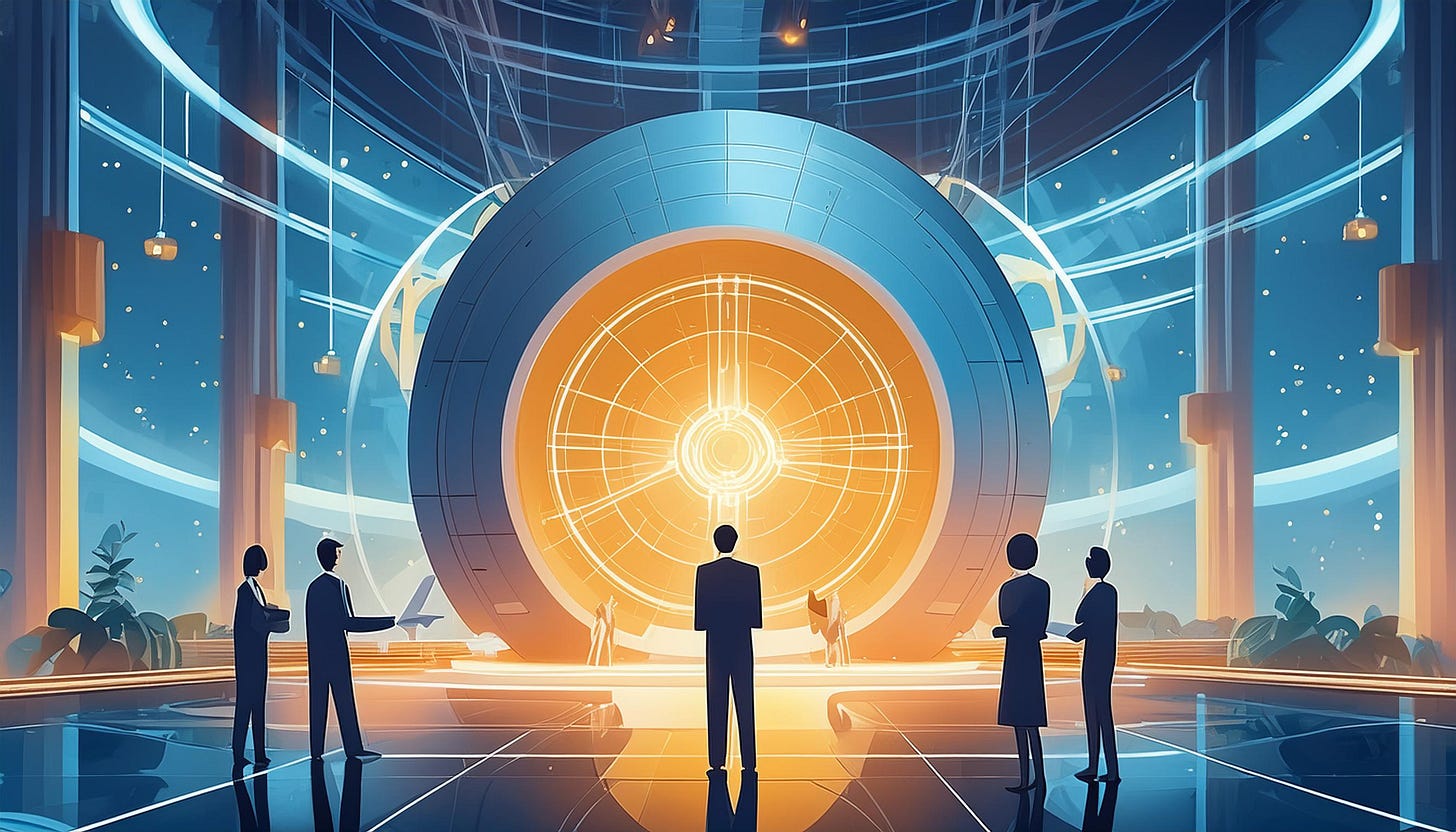Remember who you are talking to
How lessons from fusion energy can help you better understand your target audience
When you communicate your work to others, how much attention do you pay to who you are actually talking to?
Do you think about what age they are? Where they live? What are their political leanings, or levels of education?
Do you consider their hopes, and what they want or need from life, and their fears, such as what bothers or scares them?
As much as you can, you should. Because understanding your target audience better enables you to reach, impact and influence them.
I spoke about this principle of good communication last week at Fusion24, an excellent conference based at the UK’s national Science Museum in London, which brought together everyone working to fulfil the promise of fusion energy - an exciting, emerging technology that has the potential to transform how energy is created and harnessed worldwide.
Serendipitously, it is also backed by new research just published into how people perceive fusion energy.
Common themes emerge from both the conference discussions and research.
These should not only help those working to understand how people feel and react to the prospect of fusion energy, but any organisation considering how to understand and shape public perceptions of its own work.
At the event, I spoke with fellow communications specialists and policy makers, regulators, commercial operators, scientists and engineers working on fusion.
I highlighted how, when considering what people think and will think of fusion energy, it’s important to frame any discussion towards the actual, particular audience being communicated with.
So fusion technology will have many different audiences, in terms of demographic, geography and at different times in the technology and industry’s life cycle.
For example: an audience may be people interested in the technology. Or those funding it. Or those utilising it. Or living near a power plant.
Those audiences are then going to interested in different things, for example:
People advancing the technology will want to know about the research and science.
Organisations funding it, will want to know about their prospective return on investment.
Communities utilising it will want to know the risks and benefits.
That view is backed by a very timely piece of aforementioned research that explores public views on fusion energy across five European countries (Belgium, Hungary, Italy, Slovenia and Spain).
First, a quick summary of the issues surrounding fusion energy, concisely explained by Christopher R. Jones and colleagues in their paper “The clock is ticking: Understanding the ‘mixed feelings’ about fusion energy in Europe,” published in Energy Research & Social Science, Volume 113, July 2024.
As they state:
“Nuclear fusion reactions are the reactions that power and sustain our Sun and other stars. Research into fusion energy is seeking to replicate these reactions on Earth. While classed as a nuclear technology, the processes of nuclear fusion differ from those of nuclear fission. While nuclear fission splits atoms (typically Uranium-235) to release thermal energy (which can then be harnessed to generate electricity), fusion works by combining (‘fusing’) two isotopes of hydrogen (deuterium and tritium). It is nuclear fission that is used to power the world’s current fleet of nuclear power plants.
If it can be made to work, fusion is deemed to hold certain advantages over fission. These advantages particularly relate to things like the risks of nuclear meltdown, the availability of the fuel, and the production of radioactive waste. There is no risk of nuclear meltdown with fusion, as the fusion reaction stops rapidly and automatically in the event of technical failure.
The deuterium needed to power the fusion reaction is essentially unlimited and methods of tritium production and storage are advancing. And while fusion would generate some radioactive waste, there would be less of it and it would be less radioactive and shorter lived than that from nuclear fission.
Despite these advantages, however, fusion energy remains contentious. For example, questions have been raised about the high level of research and development investment it is receiving, its long commercialisation timescales and, ultimately, its viability as a future energy source.”
Now let’s jump to what Jones and his colleagues discovered about what people in Europe think of the prospect of living with fusion energy reactors.
First, they highlight that “research into public attitudes towards fusion has been sporadic, with only a handful of rigorous studies being conducted into the topic, supplemented by periodic national polls of public opinion.”
In summary, not much has been done to answer the important communication principle of understanding the target audiences for fusion energy, and therefore gaining deeper insights into not only what they think about the technology, but why they think it.
Second, the researchers then highlighted how four factors tend to shape how people perceive and form attitudes towards energy technologies, summarised as:
Technology, people, process and place.
Technology factors relate to the perceived social, economic and environmental risks and benefits of the technology.
People factors are the socio-demographic factors, such as the audience’s gender, age, and ethnicity that shape how they perceive the risks and benefits of any technology.
Process factors reflect the characteristics of the decision-making process, i.e. is information about the technology being transparently shared with them, are they being consulted, and can they collaborate to help shape any decisions taken?
Place factors are the local characteristics of where the audience lives, i.e. is it a place of high or low population, with a distinct social or geographical culture?
Put more simply, an audience’s reaction to any prospective energy technology will be rooted in who they are (people), where they live (place), their perception of the risks and benefits to them (technology), and the degree to which they will be involved (process).
Third, the researchers then discovered that the reaction of people across all five countries to the prospect of fusion technology was broadly similar.
Participants in all groups were generally positive about nuclear fusion, relating to the status of fusion as a prospective, abundant, clean and secure energy source. They were enthused by the extent of the international collaboration that is driving fusion research and development.
Scepticism about fusion stemmed primarily from either participants’ self-claimed lack of familiarity and knowledge about the technology (e.g. its objective risks and benefits), and a recognition that fusion remains experimental and commercially unproven.
However, when scratching beneath the surface of people’s headline attitudes towards fusion, the researchers discovered that people consistently raise “a plethora of logical, thoughtful and widely shared questions about the role that it could and/or should play in a future decarbonised energy system in mainland Europe.”
But, again highlighting the need to know your audience when communicating with them, differing audiences did react differently to other issues relating to fusion energy.
The high financial costs of investing in the research and development of fusion were perceived as a key disadvantage of the technology. But attitudes to what fusion will cost and who pays varied by country.
In Spain, in particular, people debated whether the state should invest in unproven technologies such as fusion that equally have such potential.
In Belgium and Italy, people worried that investing in fusion may detract from investments in more mature, proven low-carbon, renewable energy technologies.
When asked about the perceived safety of fusion energy, people in Slovenia reacted strongly, questioning whether the technology could lead to catastrophic accidents or explosions as caused by nuclear fission reactors at Chernobyl in Ukraine and Fukushima in Japan.
That reaction was likely stimulated, say the researchers, by ongoing national discussions about the safety of an existing nuclear fission reactor in Slovenia at Krško.
The researchers reveals a host of further insights about the public perception of, and receptiveness to, fusion energy.
Perhaps even more important though, it confirms much that we already know about audiences listen to messages and content communicated to them.
That is, their reaction will depend on who they are, where they live, what they know, what interests them, what they believe in, and what is their self-interest.
Though that may sound obvious, it’s a principle many people, and whole sectors and industries, can forget or ignore as they seek to understand and shape the public perception of their progress and work.
Why am I receiving The Factual Storyteller?
We hope you like the newsletter which regularly shares tips, techniques and insights to help you better find stories in your work and professionally communicate with others.
You are receiving The Factual Storyteller newsletter because you will have either have directly signed up to receive new editions, followed us on the Substack platform, or you have recently enrolled in the Factual Storytelling Course. The newsletter is free, and you can unsubscribe at any time.





